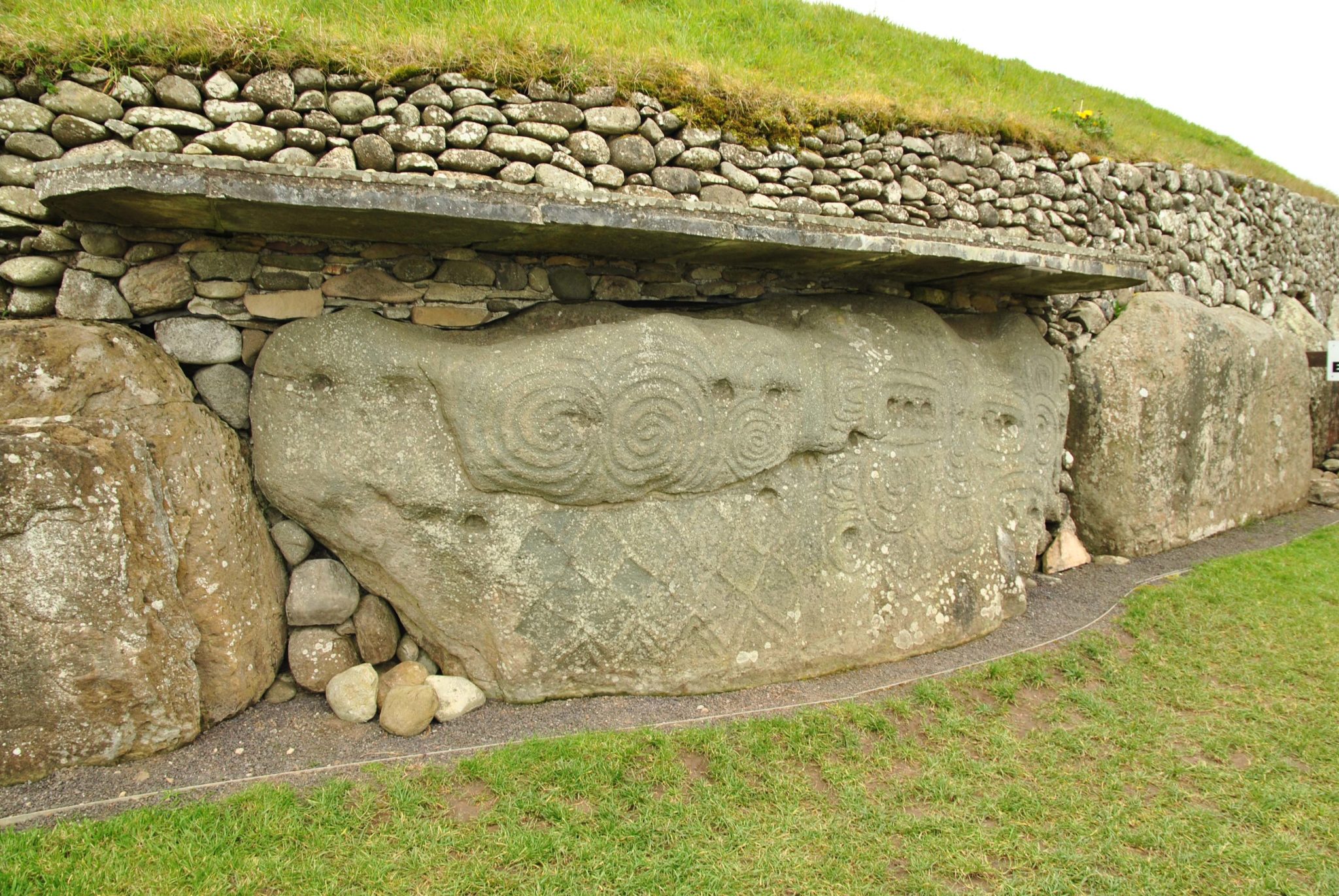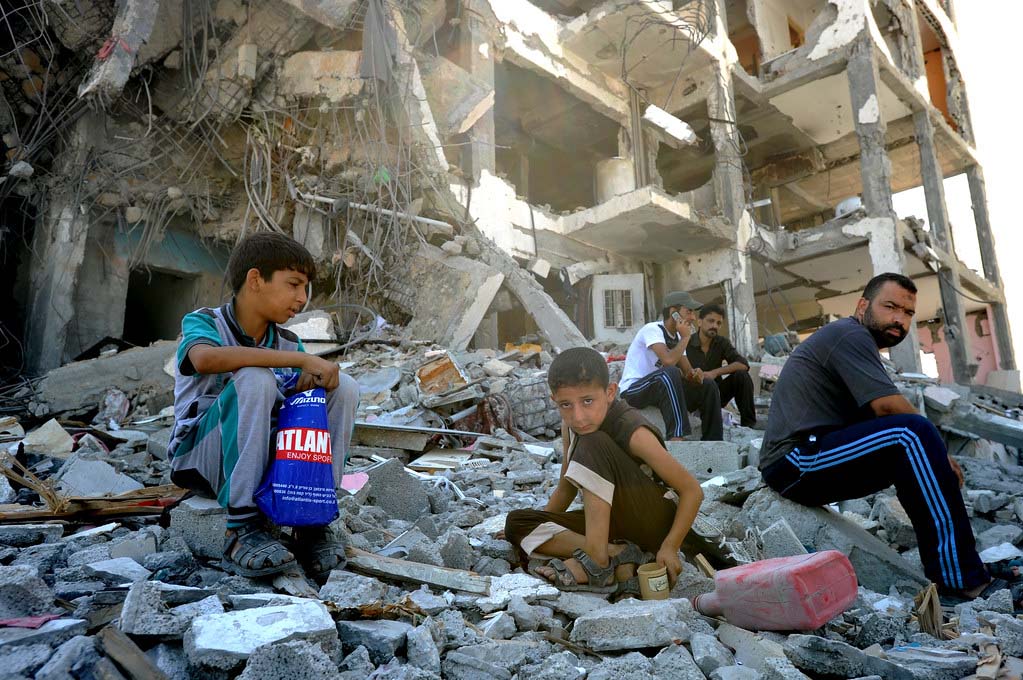- Opinion
- 07 Dec 23
Christmas Special: "Faith is both fuel and flag for personal, corporate and national aggrandisement and expansion"

Reflecting on a ‘Newgrange moment’, The Whole Hog considers what our forebears would have made of our tumultuous modern world - and the vindictiveness and brutality on display in what was once called The Fertile Crescent...
A new school stands behind Hog House. It has replaced a mash-up of crumbling tarmac and walls surrounded by various veteran trees. Uninspiring? Yes, but this dismal waste ground always had one highlight: a celestial light show for the winter solstice. In mid-December the inner wall of our kitchen would be suddenly and spectacularly lit by a brilliant shaft of light just after sunrise, every morning.
Although constrained by the new buildings, it still happens as the angles and aspects align. It’s both brief and beautiful, a small, local Newgrange moment, Year after year it marks the deepest moment of midwinter. The sun will go no lower. A new year is at hand. For Neolithic Ireland, it was a singular certainty in an uncertain world. It still is.
Newgrange itself was built well over 5,000 years ago, by a farming community grown wealthy on the fertile soil of the Boyne Valley. Their forebears had arrived off the steppes of Ukraine, following the sun westwards till they reached the edge of the world, as they understood it, in Ireland, France, Scotland.

With them came farming knowledge first learned in the Fertile Crescent of Mesopotamia where humans abandoned hunting and gathering and adopted livestock keeping and tillage as their way of life. This allowed them to prosper as well as survive, to expand and dominate.
With farming came wealth, dominance, ownership, fences, calculations and exploitations. The Fertile Crescent was formed by the Tigris and Euphrates rivers and the Mediterranean Sea. It comprised a broad swathe of territory running from southern Egypt, through what we now know as Palestine, Israel, Lebanon, Jordan, southern Turkey and down to the Persian Gulf.
But what was once a Garden of Eden, a vast and bountiful breadbasket that fed the many, is now a war-scarred cradle of death and division, of terrible violence, cruelty and murdering hate, of fire and brimstone, of smoke, dust and ash. The place where humans first learned to farm could even be the place where human history comes to an end, if the gathering storm is not abated. And how grimly ironic it is to recall that a desert creed originating there supplanted the solar certainties of Newgrange in Ireland, as in much of the world.
Born under a wandering star. Christianity began two millennia ago as a dusty Judean - that is Jewish - heresy.
The creation myth of this faith will be repeated again and again, even as the primordial shaft of light runs along the wall (in Hog Heights as in Newgrange!). The legend says that three wise men came out of the east looking for the Messiah, guided by a wandering star, and they found him in a stable where he had been born.
Invariably, and certainly since the time of Charles Dickens, at Christmas time this triggers entirely justified commentary on the hypocrisy of societies that purport to honour Christ, but neglect vulnerable children, the homeless, refugees and other excluded groups. This year there will be increased, and again entirely warranted, criticisms of people who assert their whiteness, nativeness and Christianity as bulwarks against those of other colours, creeds (or none) and ethnic origins.
We’re atheists up here on Hog Heights. Nonetheless, we acknowledge that the child born under a wandering star and whose birth is celebrated at midwinter was a disrupter. He preached a frugal, humble and forgiving life, devoid of rancour, selfishness and greed, in contrast to the hypocritical, venial and self-satisfied society of Rome’s colony in Judea. Of equal importance in these dark, warring days of mass murder and revenge, he advocated pacifism.
In his Sermon on the Mount he said: “Blessed are the peacemakers”. Or so it is reported.
This theme of love, forgiveness and peace recurs through his words, as they were captured in the Gospels; but they faded from view as the faith became institutionalised and the functionaries grew the brand. The more he was deified, the less his message was heard. Like most other faiths, Christianity has been constantly embroiled in war, exploitation, pillage and conquest. More often than not, faith is both fuel and flag for personal, corporate and national aggrandisement and expiation.
Life is complicated enough, with myriad notions of nationhood and identity and creation myths; of national and ethnic narratives - whether triumphant and self-satisfied or bitter and resentful; and of traditions and beliefs. But two beliefs, central to the three Semitic faiths of Judaism, Christianity and Islam are especially troubling - and, in the global tinderbox with which we must now contend, potentially catastrophic.
The first is that followers of the faith are The Elect, the Chosen People. The second is that a person who dies in a holy war is a martyr and is guaranteed entry to “Paradise”.
If things go further awry in Gaza and beyond, then our goose may well be cooked. After the fury, the fire and the brimstone, we may be left with nothing but the bones, ash and dust. Ash to ash and dust to dust.
 Palestinians search through the rubble of their destroyed homes in the northern Gaza strip.
Palestinians search through the rubble of their destroyed homes in the northern Gaza strip.BEFORE FAITH
Newgrange is older than Stonehenge and the Great Pyramids. It was built long before faith, and written words became tinder to the hellish fires of war, and long before the biblical Abraham’s fractious descendants sharpened blades to cut each other’s throats.
Those early Irish farmers were prosperous. Archaeologists have learned much about their lives by sifting through the bones, artefacts, dust and ash they left behind. If they were teleported to the 21st century they’d certainly recognise the communal generosity they’d find in Ireland. It’s not perfect by any means, but it’s there. They’d see that the children in the new school are warm and safe in winter, thanks to its insulation and double-glazing and strong social norms. But many are not, especially those in impoverished countries and war zones.
No doubt, they’d be bamboozled by technology and machinery, though they’d understand, and probably enjoy the ingenuity and industry. Certainly, they’d be tickled pink to find that after 250 generations, a shaft of sunrise light still pierces the winter darkness at Newgrange and that the deep, fundamental rhythm of the year still pulses just as it did over five thousand years ago.
But a people who were so fixed on the natural cycle and devoted to maintaining good relations with the natural world would surely want to remind us of our obligations to make peace with the only world we have, to work with - and not against - it.
They’d probably remind us too that after pomp and circumstance, success and failure, upticks and approvals, beauty and glamour and spending sprees, battles and reconciliations, we too will end up as dust and ash. So, for next year let’s resolve to make the best of what we are and where; to restore the natural world and to help, as far as possible, to reconcile enemies.
As the fella said, blessed are the peacemakers. Merry midwinter.
RELATED

- Opinion
- 14 Nov 25
Massive Attack announce plans for new music - and it won't be on Spotify

- Opinion
- 11 Nov 25
Council tenants to protest in Dublin against proposed rent hikes

- Opinion
- 11 Nov 25







